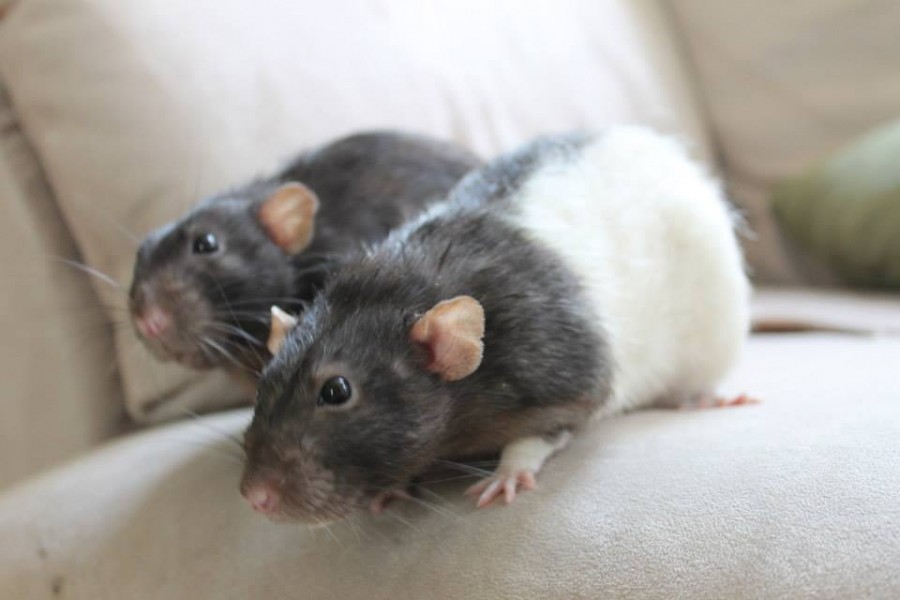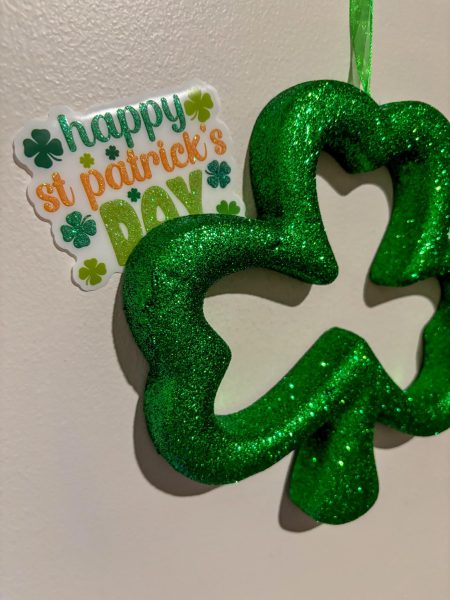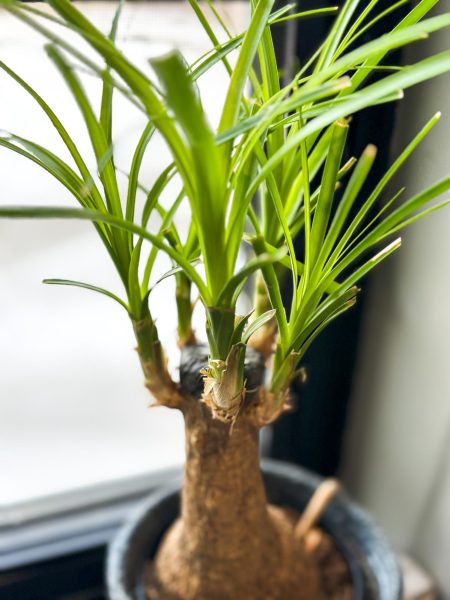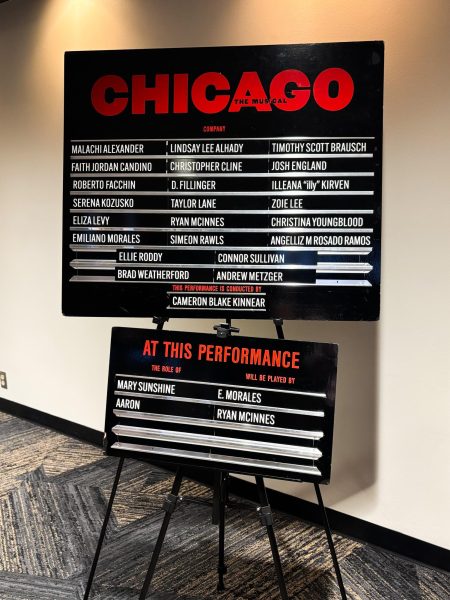Cultural stigmas pose threat to all animals
To the left, Lawrence snuffles. To his right, Arnold wuffles. Photo by Steph Gartner/The Dakota Student.
Many critters carry an archetype or a reputation that has been placed on them over time in society. These are emphasized in movies, books and word of mouth. If you were to say the word “rat,” most people would almost immediately picture a large, dark, diseased sewer rat and cringe, maybe even responding with a shiver. Rodents are often portrayed in movies as negative symbols representing filth, horror and discomfort.
Another unfortunate setting rats are placed in is laboratories, being tested on to “improve” products for humans. These are often depicted as the white furred, red eyed rat in a cage that foam at the mouth.
Both of these popular stigmas give rodents, especially mice and rats, a bad rap; they are viewed as vermin, unwanted and disposable. This, sadly, can be grounds for abuse — poisoned, kicked, stepped on, etc.
As an owner of four wonderful and adorable rats — deemed by friends as a “soccer mom of rats,” I show pictures and videos of my boys any chance I can get. It makes me physically sick knowing how vilified rodents are.
Many curl their noses when I tell them of my boys, thinking of the archetypes so imbedded in their minds. However, as I show pictures, tell stories and introduce them as individuals with names (Lawrence, Arnold, Manfred and Bartleby), a different light is seen. There’s an even bigger change upon meeting them — petting them, seeing the tricks they know (proud rat mama moment), and how completely docile, intelligent and not-rabid-sewer rat they are.
Upon adopting my first two, I received a lot of eye-rolls and pursed lips (mostly from my mother). Squeals and cringes were not uncommon in first encounters of meeting the two, which I simply shrugged off. I spent hours sitting on the floor with my boys, building trust, teaching tricks, giving lots of scratches, hand wrestling and receiving little ratty kisses. I can proudly show off all the work and bonding that has been made with them, not differing in the least from such work with other pets.
Not only are they incredibly clever — picking up commands such as their name, come, circle, no, and to go in their cage on command — they are surprisingly clean. They groom themselves more than cats do. They know me as their safety, and will come to me when they’re in a new place. They understand not only my commands, but my energy, too.
Several friends, co-workers and family members have had their opinions and views of rats changed with my incessant blabbering and meetings with the boys, even so much as to ask how they are doing.
As an animal lover, I try to care for and support all animals, large and small. My first dog’s pawprint is tattooed on my shoulder, and I have a sterling silver rat ring on my finger. However, my activism of signing petitions and spreading information about my beloved ratty boys and their cousins has certainly made a huge difference, even if it is just with a few people.
Life is made of stereotypes and stigmas; breaking those save lives, human and otherwise.
Steph Gartner is a staff writer for The Dakota Student. She can be reached at stephanie.gartner@my.und.edu.












